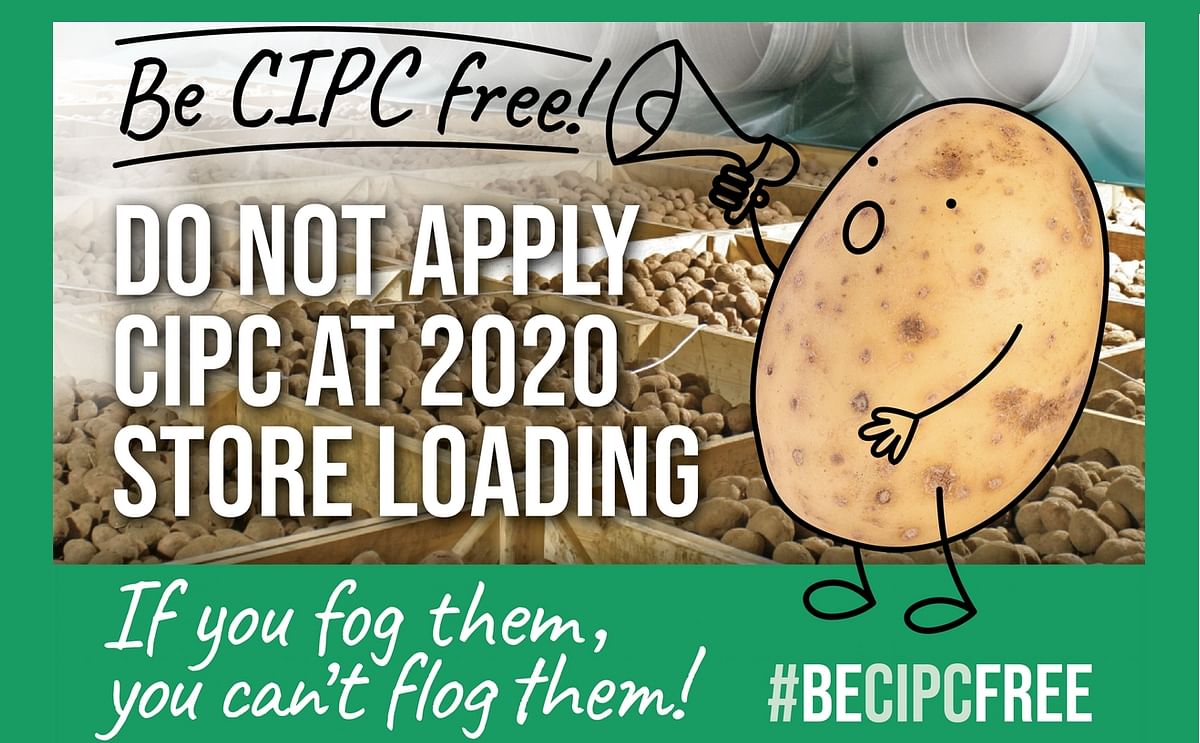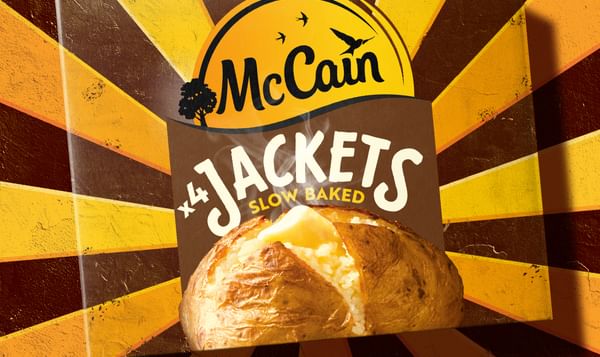AHDB Potatoes warns potato growers in the United Kingdom that use of CIPC on their 2020 potatoes makes it impossible to sell them
AHDB warns UK potato growers not to use CIPC at 2020 store loading

The Potato Industry CIPC Stewardship Group (PICSG) has warned potato growers and buyers against applying sprout suppressant Chlorpropham (CIPC) at 2020 store loading.
The popular active, previously used on over 90 per cent of the circa 3.5 million tonnes of potatoes stored in Britain, had its approval for use withdrawn by the European Commission on 8 January.
The maximum ‘use-up’ period of nine months was set by the EU, with member states able to set their own date within that timeframe.
This means the last possible use-up date is 8 October – during the very early stages of potato store loading in a typical season. This date has now been officially confirmed as the use-up date in the UK.
Dr Mike Storey, chair of the PICSG, said that businesses who have not been monitoring technical messages will be at risk of crops not passing inspection.
Mike Storey:
Adrian Cunnington, Head of Crop Storage Research at AHDB, believes many growers are aware of the changes and will know that the 2019 harvest is the last that can be treated with CIPC.
Adrian Cunnington:
The Storage Network is delivered by Sutton Bridge Crop Storage Research and a group of independent advisors trained by our specialists at SBCSR. Alongside eight additional storage research projects, it is part of an £800,000 ring-fenced fund to help the industry deal with the withdrawal of CIPC, announced by AHDB in 2019.
Store managers in the United Kingdom can sign-up for their visit via the AHDB storage hub or by calling +44 1406 359419.
How clean is your store?
This summer's potato crop is likely to come out of store after the new, as yet unknown, maximum residue levels (MRL) for CIPC come into force, it pays to start preparing as soon as stores begin to empty.
Store cleaning is a fundamental part of managing a store and will become increasingly important as the industry looks to reduce CIPC residue levels in store.
Not sure where to start? These four simple steps will help reduce CIPC residue levels and keep a clean store overall:
1. Keep it dry
Use a vacuum for removing loose dust, and a stiff brush or chisel to move any more firmly attached deposits*. Washing with water is not recommended.
*treat deposits as you would any other plant protection product, wear appropriate PPE and dispose of waste appropriately.
2. Let it breathe
Let free air move through your store via open louvres and doors, so that any CIPC residue present in the store environment can be released.
3. Catch some rays
Boxes should be left to weather outside to encourage the natural breakdown by the sun’s UV rays of any CIPC present in the timber. Space them out so that exposure to light is maximised while ensuring that it doesn’t cause a Health & Safety hazard.
4. Write it down
Keep a record of when and how you cleaned your store. This evidence will likely prove valuable in demonstrating that the Industry is taking a pro-active approach towards keeping residues down.
Going forward, cleaning will be one of the key pillars of industry-wide efforts towards minimising CIPC residues, and is likely to be one of the conditions imposed for a temporary MRL (tMRL).
Other efforts include the establishment of a store cleaning protocol that will apply to a variety of storage situation, something that industry stakeholders across the value chain and regulators are working closely on.
The popular active, previously used on over 90 per cent of the circa 3.5 million tonnes of potatoes stored in Britain, had its approval for use withdrawn by the European Commission on 8 January.
The maximum ‘use-up’ period of nine months was set by the EU, with member states able to set their own date within that timeframe.
This means the last possible use-up date is 8 October – during the very early stages of potato store loading in a typical season. This date has now been officially confirmed as the use-up date in the UK.
Dr Mike Storey, chair of the PICSG, said that businesses who have not been monitoring technical messages will be at risk of crops not passing inspection.
Mike Storey:
“This will become an issue at the point at which the Maximum Residue Level (MRL) of CIPC allowable on potatoes for human consumption, which is currently 10 parts per million (ppm), drops to a new temporary MRL (tMRL). We think this will happen before the 2020 harvest comes out of store.”Some countries, including potato superpower Belgium, have taken this possibility out of the equation by bringing the use-up period forward to June.
“We don’t yet know the tMRL rate, although AHDB has been part of a Europe-wide effort to submit data from commercial stores to inform this.”
“We know where we hope it will be, and it is at a level that will be achievable if you’re using stores that have previously used CIPC, as long as cleaning guidelines are followed – but if you apply CIPC to crop this year it will not pass an inspection.”
Adrian Cunnington, Head of Crop Storage Research at AHDB, believes many growers are aware of the changes and will know that the 2019 harvest is the last that can be treated with CIPC.
Adrian Cunnington:
“Most growers are on top of this situation, but we are still receiving some worrying reports that there are producers who are not fully aware of the changes and their consequences.”Information on alternative products is available on the AHDB website’s storage hub. And, to help store managers prepare, AHDB is offering free one-to-one potato store visits via its new Storage Network. The visits are designed to help businesses prepare for life after CIPC.
“Any grower who applies CIPC in autumn 2020 is at high risk of being unable to sell that crop. Our message is quite simple when it comes to CIPC at 2020 store loading – if you fog them, you can’t flog [PP: informal British term for SELL] them.”
The Storage Network is delivered by Sutton Bridge Crop Storage Research and a group of independent advisors trained by our specialists at SBCSR. Alongside eight additional storage research projects, it is part of an £800,000 ring-fenced fund to help the industry deal with the withdrawal of CIPC, announced by AHDB in 2019.
Store managers in the United Kingdom can sign-up for their visit via the AHDB storage hub or by calling +44 1406 359419.
How to reduce CIPC residue levels with store cleaning
How clean is your store?
This summer's potato crop is likely to come out of store after the new, as yet unknown, maximum residue levels (MRL) for CIPC come into force, it pays to start preparing as soon as stores begin to empty.
Store cleaning is a fundamental part of managing a store and will become increasingly important as the industry looks to reduce CIPC residue levels in store.
Not sure where to start? These four simple steps will help reduce CIPC residue levels and keep a clean store overall:
1. Keep it dry
Use a vacuum for removing loose dust, and a stiff brush or chisel to move any more firmly attached deposits*. Washing with water is not recommended.
*treat deposits as you would any other plant protection product, wear appropriate PPE and dispose of waste appropriately.
2. Let it breathe
Let free air move through your store via open louvres and doors, so that any CIPC residue present in the store environment can be released.
3. Catch some rays
Boxes should be left to weather outside to encourage the natural breakdown by the sun’s UV rays of any CIPC present in the timber. Space them out so that exposure to light is maximised while ensuring that it doesn’t cause a Health & Safety hazard.
4. Write it down
Keep a record of when and how you cleaned your store. This evidence will likely prove valuable in demonstrating that the Industry is taking a pro-active approach towards keeping residues down.
Going forward, cleaning will be one of the key pillars of industry-wide efforts towards minimising CIPC residues, and is likely to be one of the conditions imposed for a temporary MRL (tMRL).
Other efforts include the establishment of a store cleaning protocol that will apply to a variety of storage situation, something that industry stakeholders across the value chain and regulators are working closely on.
Like to receive news like this by email? Join and Subscribe!
Join Our Telegram Channel for regular updates!
Highlighted Company
Sponsored Content
Sponsored Content
Sponsored Content
Sponsored Content
Sponsored Content










